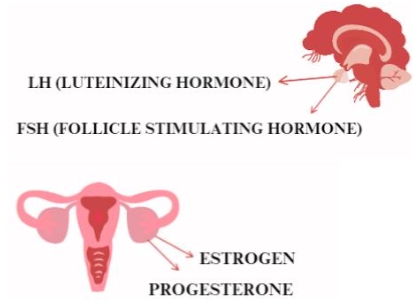The impact of Heideggerian Philosophy on art and psychological well-being: A social psychological examination
Abstract
Heidegger is one of the most famous philosophers from the 20th century who presented great insights about various themes such as politics, arts, and metaphysics. This paper intends to study Heidegger’s concept of art. It traces the origin and development of Heidegger’s philosophy and explains his philosophies in terms of great artworks and their role in depicting and representing tradition, history, and transformation. A culturally rich environment can contribute to the well-being of individuals by providing a sense of connection and rootedness. In addition to presenting a literature-based review of Heidegger’s philosophies’ history and origins, this paper includes a detailed look at his various works and discusses them in literary terminologies. Heidegger’s philosophical inquiries touch upon ethical dimensions, and art can be a powerful tool for conveying ethical messages and provoking ethical contemplation. Societies that engage with art in this way may foster a collective ethical awareness, contributing to a sense of social responsibility and potentially enhancing the well-being of the community. Moreover, the present review highlighted the interpretation of Heidegger’s philosophy and its implications for society can vary among scholars and individuals. The impact on well-being depends on how these ideas are understood, applied, and integrated into the broader cultural and social context.
References
[1]Sharr A. Heidegger for Architects. Routledge, 2007. doi: 10.4324/9780203934197
[2]Caputo JD. Husserl, Heidegger and the question of a “hermeneutic” phenomenology. Husserl Studies. 1984, 1(1): 157-178. doi: 10.1007/bf01569213
[3]Ziarek K, Bove PA, Bruns GL, et al. The Reception of Heidegger’s Thought in American Literary Criticism. Diacritics. 1989, 19(3/4): 114. doi: 10.2307/465393
[4]Binswanger L, Herzog M, Braun HJ. Basic Forms and Knowledge of Human Existence (German). E. Reinhardt; 1962.
[5]Dreyfus HL, Wrathall MA (editors). A Companion to Heidegger. John Wiley and Sons; 2008.
[6]Wheeler M. Martin Heidegger. Stanford Encyclopedia of Philosophy; 2011.
[7]Yung J. Heidegger’s Philosophy of Art. Cambridge University Press; 2001.
[8]Kockelmans JJ. Heidegger on Art and Art Works. Springer Netherlands, 1985. doi: 10.1007/978-94-009-5067-2
[9]Rezaii M. An analysis of the origin of the artwork. Journal of Philosophy. 2012; 4(44): 54–61.
[10]Norouzi S, Javdaniyan S. Martin Heidegger’s viewpoint about art. International Journal of Science and Research (IJSR). 2017, 6(6): 2584–2587. doi: 10.21275/24061704
[11]Polt R. Heidegger. Routledge, 2013. doi: 10.4324/9781315889467
[12]Steiner G. Martin Heidegger: With a New Introduction. University of Chicago Press; 1991.
[13]Wolfe J. Heidegger’s Eschatology. Published online July 25, 2013. doi: 10.1093/acprof: oso/9780199680511.001.0001
[14]Grube GMA. Plato’s Theory of Beauty. Sugden SJB, ed. Monist. 1927, 37(2): 269-288. doi: 10.5840/monist19273728
[15]Maguire JP. The Differentiation of Art in Plato’s Aesthetics. Harvard Studies in Classical Philology. 1964, 68: 389. doi: 10.2307/310813
[16]Teufel T. What Does Kant Mean by ‘Power of Judgement’ in his Critique of the Power of Judgement? Kantian Review. 2012, 17(2): 297-326. doi: 10.1017/s1369415412000076
[17]Kemp M. The Science of Art: Optical Themes in Western Art from Brunelleschi to Seurat. Yale University Press; 1992. 383p.
[18]Schultz RM, Williams CJ. The Science of ART. Science. 2002, 296(5576): 2188-2190. doi: 10.1126/science.1071741
[19]Hiddleston JA. Baudelaire and the Art of Memory. Published online July 29, 1999. doi: 10.1093/acprof: oso/9780198159322.001.0001
[20]Badiou A. Art and Philosophy. The Continental Aesthetics Reader. Published online October 3, 2017: 686-700. doi: 10.4324/9781351226387-46
[21]Cazeaux C. Art, Research, Philosophy. Published online April 11, 2017. doi: 10.4324/9781315764610
[22]Heidegger M, John Macquarrie J, Robinson ES. Being and Time. Harper and Row Publishers; 1962.
[23]Kisiel T. Genesis of Heidegger’s Being and Time. Kisiel T, ed. Published online December 31, 1994. doi: 10.1525/9780520916609
[24]Mulhall S. The Routledge Guidebook to Heidegger’s Being and Time. Published online February 11, 2013. doi: 10.4324/9780203084311
[25]Pattison G. Routledge Philosophy Guidebook to the Later Heidegger. Routledge, 2013. doi: 10.4324/9780203131275
[26]Stulberg RB. Heidegger and the Origin of the Work of Art: An Explication. The Journal of Aesthetics and Art Criticism. 1973, 32(2): 257. doi: 10.2307/429043
[27]Feenberg A. Heidegger and Marcuse. Routledge, 2004. doi: 10.4324/9780203489000
[28]Heidegger M. The Question Concerning Technology. Garland Publishing, INC.; 1977.
[29]O'Brien, Mahon. 2004. Commentary on Heidegger’s “The Question Concerning Technology”. In: Cashin A, Jirsa J (editors). Thinking Together. Proceedings of the IWM Junior Fellows’ Conference; 2003; Vienna, Austria.
[30]Boetzkes A, Vinegar A, eds. Heidegger and the Work of Art History. Published online July 5, 2017. doi: 10.4324/9781315093079
[31]Elsherif A. The Reification of Aesthetics: Reading Heidegger’s Destructive Critique of Modernity in Light of his Early Philosophy. Cairo Studies in English. 2019, 2019(1): 2-25. doi: 10.21608/cse.2019.62182
[32]Vrahimis A. Wittgenstein and Heidegger against a Science of Aesthetics. Estetika: The European Journal of Aesthetics. 2020, LVII/XIII(1): 64-85. doi: 10.33134/eeja.29
[33]Rae G. Ontology in Heidegger and Deleuze. Palgrave Macmillan UK, 2014. doi: 10.1057/9781137404565
[34]Malpas J. Heidegger and the Thinking of Place. Published online January 27, 2012. doi: 10.7551/mitpress/9780262016841.001.0001
[35]Van Buren J. The young Heidegger: Rumor of the Hidden King. Indiana University Press; 1994.
[36]Cohen-Aharoni Y. Guiding the ‘real’ Temple: The construction of authenticity in heritage sites in a state of absence and distance. Annals of Tourism Research. 2017, 63: 73-82. doi: 10.1016/j.annals.2016.12.010
[37]Thomson I. Heidegger on Ontotheology. Published online July 11, 2005. doi: 10.1017/cbo9780511499210
[38]Henschen T. Dreyfus and Haugeland on Heidegger and Authenticity. Human Studies. 2012, 35(1): 95-113. doi: 10.1007/s10746-012-9212-6
[39]Eatough V, Smith J. I was like a wild wild person: Understanding feelings of anger using interpretative phenomenological analysis. British Journal of Psychology. 2006, 97(4): 483-498. doi: 10.1348/000712606x97831
[40]Safranski R. Martin Heidegger: Between Good and Evil. Harvard University Press; 1999.
[41]Benner P. The Tradition and Skill of Interpretive Phenomenology in Studying Health, Illness, and Caring Practices. Interpretive Phenomenology: Embodiment, Caring, and Ethics in Health and Illness. Published online 1994: 99-128. doi: 10.4135/9781452204727.n6
[42]Benner P. Quality of life. Advances in Nursing Science. 1985, 8(1): 1-14. doi: 10.1097/00012272-198510000-00004
[43]Benner P. From novice to expert. AJN, American Journal of Nursing. 1984, 84(12): 1480. doi: 10.1097/00000446-198412000-00027
[44]Churchill SD. Stories of experience and the experience of stories: Narrative psychology, phenomenology, and the postmodern challenge. Constructivism in the Human Sciences. 2002; 7: 81.
[45]Finlay L. Debating Phenomenological Methods. Hermeneutic Phenomenology in Education. Published online 2012: 17-37. doi: 10.1007/978-94-6091-834-6_2
[46]Churchill SD. Phenomenological Analysis. Qualitative Research Methods for Psychologists. Published online 2006: 79-110. doi: 10.1016/b978-012088470-4/50007-7
[47]Churchill SD, Wertz FJ. An Introduction to Phenomenological Research in Psychology: Historical, Conceptual, and Methodological Foundations. The Handbook of Humanistic Psychology: Leading Edges in Theory, Research, and Practice. Published online 2001: 248-262. doi: 10.4135/9781412976268.n19
[48]Frechette J, Bitzas V, Aubry M, et al. Capturing Lived Experience: Methodological Considerations for Interpretive Phenomenological Inquiry. International Journal of Qualitative Methods. 2020, 19: 160940692090725. doi: 10.1177/1609406920907254
[49]Stickney JA. Seeing Trees: Investigating Poetics of Place‐Based, Aesthetic Environmental Education with Heidegger and Wittgenstein. Journal of Philosophy of Education. 2020, 54(5): 1278-1305. doi: 10.1111/1467-9752.12491
[50]Gadamer HG, Linge DE, Linge DE, et al. Philosophical Hermeneutics, 30th Anniversary Edition. Published online December 31, 2008. doi: 10.1525/9780520352315
[51]Guignon CB. Heidegger and the Problem of Knowledge. Hackett Publishing; 1983.
[52]Heidegger M. Only a God can save us now (D. Schendler, Trans.). Graduate Faculty Philosophy Journal. 1966; 5–27.
[53]Heidegger M. Identity and Difference. University of Chicago Press; 2002.
[54]Heidegger M. On Time and Being. University of Chicago Press; 2002.
[55]Nikolsky SA, Akhmatova SA, Kiyaschenko NI, Urbanaeva IS. Cross-cultural analysis of two main Mahayana traditions in the aspect of conceptualization of the path. Philosophy and Culture. 2018, 7: 32–42.
[56]Mirković N. The Phenomenon of Shining. Paths in Heidegger’s Later Thought. Published online April 7, 2020: 212-226. doi: 10.2307/j.ctvxcrxjn.14
[57]Thomson I. Heidegger’s Aesthetics. Stanford Encyclopedia of Philosophy; 2010.
[58]Zimmerman ME. Heidegger’s Confrontation with Modernity: Technology, Politics, and Art. Indiana University Press; 1990.
[59]White JF. Heidegger’s Conception of World and the Possibility of Great Art. The Southern Journal of Philosophy. 2018, 56(1): 127-155. doi: 10.1111/sjp.12270
[60]Jung K. How Can Art Save Us: Reading Heidegger and Nam June Paik in the Age of Technology. Diss; 2017.
Copyright (c) 2022 Alamgir Hossain, Xiaoling Gao, Ushba Rasool, Sakiba Munni

This work is licensed under a Creative Commons Attribution 4.0 International License.









